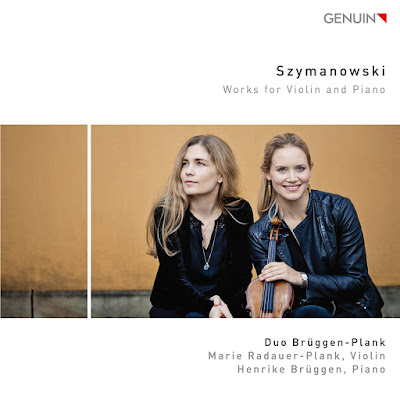
Greek philosophers in the pre-Christian era considered the four elements
to be the basic components of life on earth; there was only the
occasional argument if water or air should be considered to be the
primordeal matter. The alchemists of the late middle ages and the early
modern era placed the tenet of the four elements to be of crucial
importance; physicians used it to characterize types of patients and
astronomers discovered that celestial bodies are in corresponding
constellations to the elements on this planet. Finally the Christian
dogma also picked up on the elements and used them as characteristics of
the four archangels.
Popular belief had a vast abundance of
spirits who animated the world, there weresubterranean gnomes who
populated the woodlands, fickle sylphs who whispered in the shrubbery,
every well was inhabited by alluring undines, and salamanders could
brave even the fiercest and hottest fires.
Is the mythological knowledge of these existential components of any significance to 21st century cosmopolitans?
Our answer to this question would be a very decidedly positive: why, of course!
Precisely
at this moment, as the world seems to become unhinged on all levels,
we need more than ever the universal knowledge of the real and spiritual
dimensions of the four elements, of their creative powers and their
destructive energy, their interdependency and their sacred nucleus.
With
this album we intended to contribute to this global challenge - and we
are using music, being our language, our means of communication to
enunciate the all-embracing love and kindness we have for the world-
hoping to be received kindly and lovingly.
FIRE : Fire is a symbol of all-consuming love, it stands for burning passion and the comforting warmth of friendship.
And
whether it be a devastating blaze or the consoling warmth of a burning
wood-stove on a frosty winter’s morning….Fire is nourishing and
protecting us, but it can also be a merciless destroyer - hence we are
challenged to practice humility, caution and mindfulness.
A little
thematic prelude by Marthe Perl initiates the contemplation of this
element. We took the liberty to pick from the rich treasure of
traditional Irish melodies to depict several aspects of real flames: a
flag of fire to indicate the direction of movement, a fire in the
mountain, maybe it is threatening the forest or a village, and an old
woman who sits by the fire, sipping her tea. Then Soler’s Fandango fell
into our hands: famous as a piece for harpsichord we found it quite
suitable to carve out different aspects of persistent fervor and the
burning passion for a theme on two bass viols.
EARTH: earth is
our soil, the humus which grows our food, the life-giving furrow. We are
made of earth, as all living things, and when all is said and done we
return to earth, to become dust again and tobecome the origin of new
life. The element earth symbolizes the circular flow of the years and
the representation of growth, decay and resurrection embedded within.
Marthe’s
Earth-Prelude opens this chapter, then another Irish tune about a boggy
ground. Another Ground music are the Folia-related variations by Mr.
Farinell, ere we turn to a funeral music for two viols : the ‚Tombeau
pour M. de Meliton‘ who was a friend and patron of the great Marin
Marais.
WATER: the water-theme. Sister-element of the earth,
allegorically depicting that our life is in flow, everchanging and in
constant motion, like a river that in the end shall be released into the
ocean, whose infinitude makes us small human beings feel humble and
lost. Water is the emotional element: we shed tears of joy and sorrow.
And - just like fire - water has a huge potential for destruction: it
can wash away anything that thwarts its path.
The aspect of sorrow,
of lamenting and of teares is our predominant theme in this set. ‚Hume’s
Lamentation‘ follows Marthe’s initial Prelude and then the Lachrimaeby
Sumarte for one viol is supplemented by Marthe’s arrangement of the
famous Dowland-piece.
AIR- air is respiration! God breathes
life into us, when we first appear on earth, and finally we will take
our dying breath and be gone. Air is a symbol for movement, for wind and
whirl, for effortlessness and creativity. But also for the damaging
power of tempests and hurricanes. Marais’ ‚Bourrasque‘ isthe
presentation of a storm, then we consider together with Thomas Ford how
the air has changed - or the melody. Bagpipes are very windy
instruments, and in the wild goose-chase we hastily cut through the air
with our bows. Finally we describe a game of badminton which apparently
the noble people of Versailles already knew and played.
Fire,
Earth, Water and Air: four Elements - four different physical
conditions of our planet - and of our selves. We believe it to be
worthwhile togive special consideration to these ingredients of life, in
these times of a growing elemental imbalance in the world.
This
concertis an invitation to give way to a musical contemplation of the
complexities of the world, the ingredients of life, and to encourage a
general mindfulness. (Hille Perl, Winkelsett 2014)
 Some of the Italian musicians who came to London to ‘make their
fortunes’ found themselves influenced by the Celtic lands and their rich
tradition of folk music. They were in their turn admired and sometimes
even copied by their counterparts in the British Isles. This recording
shows the outcome of that encounter. Lorenzo Bocchi was probably the
first Italian cellist to settle in Edinburgh, in 1720.
Some of the Italian musicians who came to London to ‘make their
fortunes’ found themselves influenced by the Celtic lands and their rich
tradition of folk music. They were in their turn admired and sometimes
even copied by their counterparts in the British Isles. This recording
shows the outcome of that encounter. Lorenzo Bocchi was probably the
first Italian cellist to settle in Edinburgh, in 1720. 










































